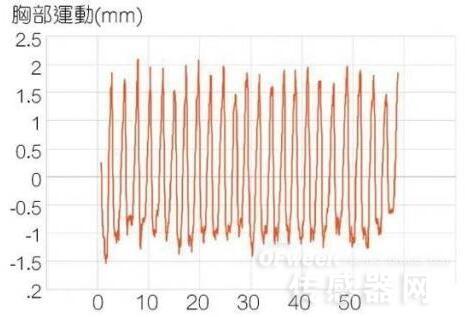Respiratory rate is an important sign of life that helps to understand a person's overall health and sleep quality. Respiratory rate and breathing patterns are also considered to be good indicators of an individual's underlying health. While the technology currently in the market promises to be able to monitor accurately and reliably, most are not ideal – some are not accurate enough and must be constantly adjusted, while others are uncomfortable to use. This article discusses various existing methods for measuring and analyzing breath to understand their limitations in meeting everyday health care and fitness tracking requirements. Overcoming these challenges is not easy, but through ultra-wideband (UWB) pulse radar, it can provide a basis for sensors such as Novelda's XeThru, allowing these sensors to reach an effective range of 2.8m and "penetrate" Obstacles such as clothes, and low cost and easy to use. Respiratory monitoring for health care Respiratory rate is the number of times a person breathes per minute, preferably at rest. Respiratory rate may increase due to fever, illness or other physical conditions. The most common way to measure respiration rate is to use the physical assessment method, which is to observe the chest of the human body and count the number of breaths in a minute. The depth of respiration can be judged by a spirometer that measures lung function based on the amount of exhaled and inhaled air. The simplest application is for doctors to use spirometers to detect pathological conditions such as asthma. Respiratory rate itself can only provide limited information, but breathing patterns (measuring rate, amplitude, and other characteristics) can provide more valuable information before being used for medical diagnosis and assessment of sleep quality. Most of the respiratory monitoring techniques currently available on the market are invasive and require the connection of the subject to the measuring device. This is true for the spirometer described above, but even a simple electromechanical respiration rate measurement usually involves attaching an elastic band to the subject's chest. Other acoustic techniques require the device to be attached to the subject's neck, while capacitive technology requires the installation of a special mattress on the bed or the mounting of the sensing element on the subject's body. These methods are mainly used for professional care situations and can provide accurate breathing patterns. However, the fundamental challenge remains that the physical connection of the sensor to the body still puts pressure on the subject. Any related discomfort will in turn affect the subject's breathing, which may invalidate the test data. Consumer respiratory monitoring technology Not long ago, even a very simple breath test had to go to the clinic. A more precise monitoring operation is to conduct a preliminary physiological diagnosis in the clinic or hospital, and only the confirmed patient will follow the breathing test. The invention of smart phones and similar high-tech electronic products (including devices such as heart rate monitors and blood glucose meters), coupled with people’s attention and concern for their own health and well-being, has raised expectations for other detection methods away from the medical environment. . As a result, the market is flooded with a variety of health care and fitness monitoring devices that help consumers track their physical activity and manage their personal health. These products use technologies similar to medically certified products and offer more improvements in medical design, so they can meet the trending requirements for providing a complete health assessment by monitoring sleep quality and breathing patterns at rest. Given the limitations of current solutions and understanding the consumer's desire for a comfortable, safe and easy-to-use health and fitness product, it is clear that a truly suitable breath/sleep monitor must meet some fairly stringent design requirements. It should be able to accurately measure and record breathing at the far end, and its placement is not critical, as long as the subject is within a reasonable detection area (Figure 1). The direction of the subject in this area does not affect the measurement. Even if there is a general obstacle (such as a duvet), the monitor should be able to work reliably. Figure 1: Example of a child's breathing record. It can be clearly seen from the figure that the accuracy of the remote monitoring needs to be measured by chest motion of only a few millimeters (mm). This technique should be applicable to people of all ages and physiques, and should be non-invasive to protect the privacy of the subject, ie monitoring with any form of video surveillance is usually excluded. In addition, it should be possible to monitor multiple people at the same time. In terms of sensor performance, further considerations to meet these goals include safe use, low cost, low power consumption, and ease of integration into end device designs, and are small in size and provide a digital interface. GMP Certificated Immune Globulin Injection Supplier in China Hepatitis B Immunoglobulin,Hep B Immunoglobulin,Hepatitis B Immunoglobulin Vaccine,Hepatitis Immune Globulin FOSHAN PHARMA CO., LTD. , https://www.fospharma.com